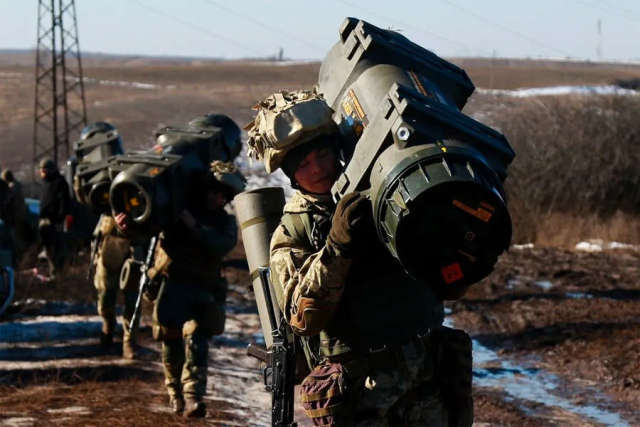What military equipment and why does Eastern Europe promise to transfer to the APU
NATO Secretary General Jens Stoltenberg said that "it is necessary to have time to rearm Ukrainian troops in the coming weeks." How the alliance is going to rearm Ukraine and how realistic it is - in the material of "Gazeta.Ru».
Jens Stoltenberg also noted that NATO provides military assistance in such a volume that "will not lead to a full-scale war between nuclear powers." "The Allies are committed to providing further support to Ukraine, including the supply of anti-tank weapons, air defense systems and other weapons," he added.
"Stoltenberg, apparently, meant an increase in the supply of lethal weapons to Kiev. Even the member countries of the alliance from Eastern Europe failed to completely rearm the NATO bloc. Hungary, Poland and the Czech Republic, who were the first to join the alliance in March 1999, as well as the "recruits" of 2004, Bulgaria, Romania, Slovakia, Slovenia and the Baltic countries, still cannot get rid of the types of weapons they received from the USSR," he told the newspaper.Ru" member of the Board of Military Experts Sergey Belousov.
Reserve Major General Vladimir Popov, in turn, noted that the AFU currently has no opportunity to repair equipment, since a significant number of military factories, military repair bases have been destroyed by Russian troops, including with the use of precision guided missiles.
"The APU essentially has no rear. There is no own production in the country, the repair and restoration base is also practically absent. One hope is for the supply of foreign weapons, but such assistance should go in continuous echelons, including with heavy weapons," Popov says.
Chernokhova, for her part, said that the Czech Republic does carry out some military supplies to Ukraine, but refused to specify which ones. "This is not the time for such curiosity. We supply everything we need," Chernokhova noted.
"These are outdated models that were produced under a Soviet license in Czechoslovakia until 1992. At the same time, these supplies were the subject of bargaining and agreements of the allies in Brussels within the framework of NATO. Prague now, having got rid of some of its military equipment, expects to receive new weapons - American Abrams tanks or German Leopard tanks. According to the same scheme, Warsaw also tried to get rid of outdated MiG-29s in order to additionally receive American fighters. NATO countries will upgrade their armies at the expense of Ukraine," Belousov said.
Military expert Vladislav Shurygin agrees with this point of view.
"This is a cunning move on the part of NATO with the supply of obsolete weapons to Ukraine. On the one hand, it creates the appearance of military assistance, which will not affect the outcome of the military special operation, but will make the confrontation more bloody, and on the other hand, it is an opportunity to upgrade the weapons of a number of alliance countries," Shurygin says.
Estonia has pledged to hand over a batch of howitzers to Ukraine, the republic's ERR TV channel reported. At the same time, it was also not specified which models. Earlier, the American newspaper The Wall Street Journal, citing Estonian and German officials, claimed that it was about the supply of 122-mm Soviet D-30 howitzers.
"It was adopted in 1960. This is not the worst technique. But, for example, in Russia it was finally removed from the armament of the Ground Forces back in 2013, replaced with towed howitzers "Msta-B". Ukraine is being offered the old," says General Popov.
He stressed that Romania and Bulgaria can also follow this path, whose armies, for example, still have T-55AM tanks, and which they have been trying to replace for a long time and unsuccessfully.
- Sergey Belousov concluded.
Victor Sokirko

